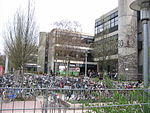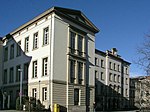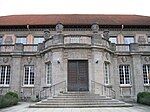Max Planck Institute for Biological Cybernetics
The Max Planck Institute for Biological Cybernetics is located in Tübingen, Baden-Württemberg, Germany. It is one of 80 institutes in the Max Planck Society (Max Planck Gesellschaft). The institute is studying signal and information processing in the brain. We know that our brain is constantly processing a vast amount of sensory and intrinsic information by which our behavior is coordinated accordingly. How the brain actually achieves these tasks is less well understood, for example, how it perceives, recognizes, and learns new objects. The scientists at the Max Planck Institute for Biological Cybernetics aim to determine which signals and processes are responsible for creating a coherent percept of our environment and for eliciting the appropriate behavior. Scientists of three departments and seven research groups are working towards answering fundamental questions about processing in the brain, using different approaches and methods.
Excerpt from the Wikipedia article Max Planck Institute for Biological Cybernetics (License: CC BY-SA 3.0, Authors).Max Planck Institute for Biological Cybernetics
Max-Planck-Ring,
Geographical coordinates (GPS) Address External links Nearby Places Show on map
Geographical coordinates (GPS)
| Latitude | Longitude |
|---|---|
| N 48.536666666667 ° | E 9.0588888888889 ° |
Address
Max-Planck-Institut für Biologische Kybernetik
Max-Planck-Ring 8
72076 , Schönblick / Winkelwiese
Baden-Württemberg, Germany
Open on Google Maps






